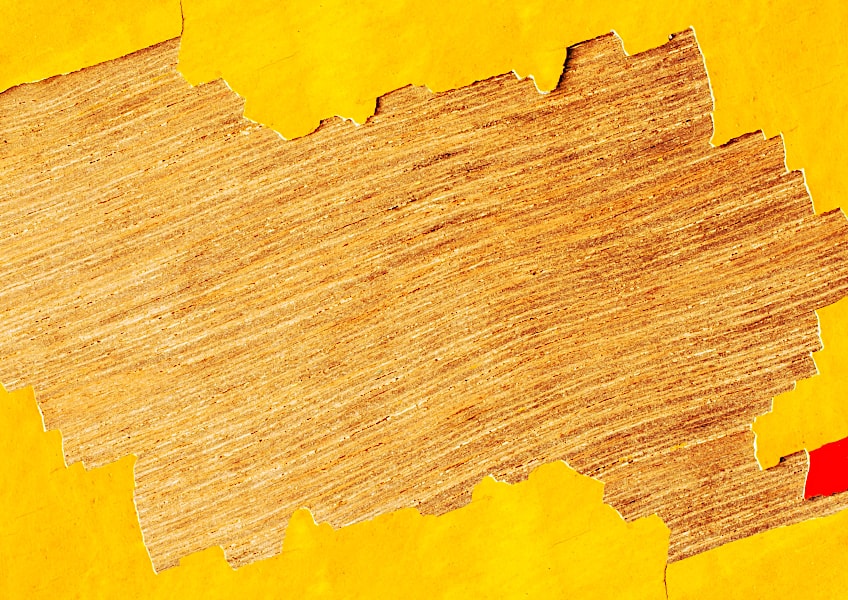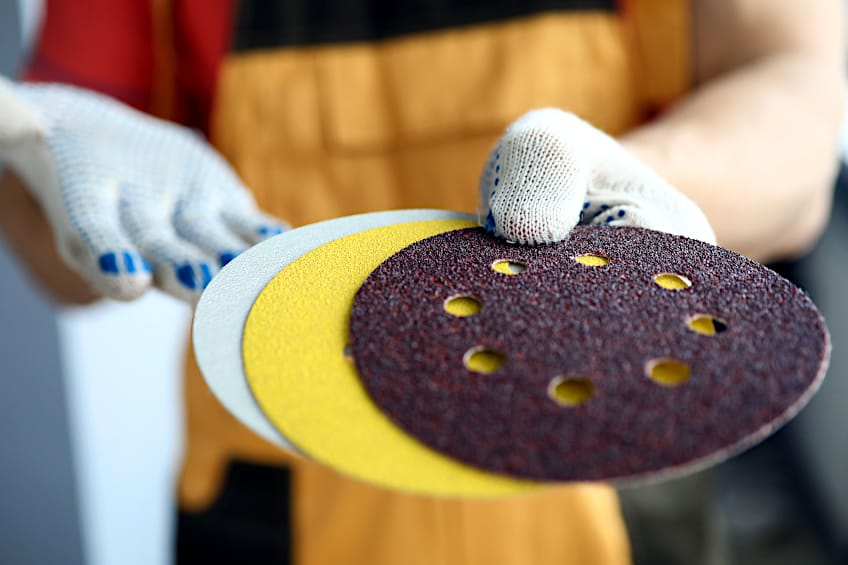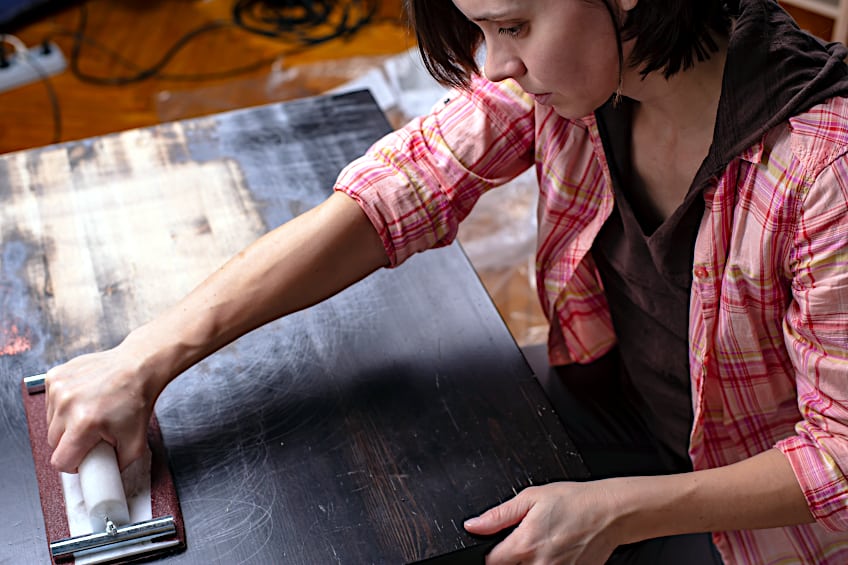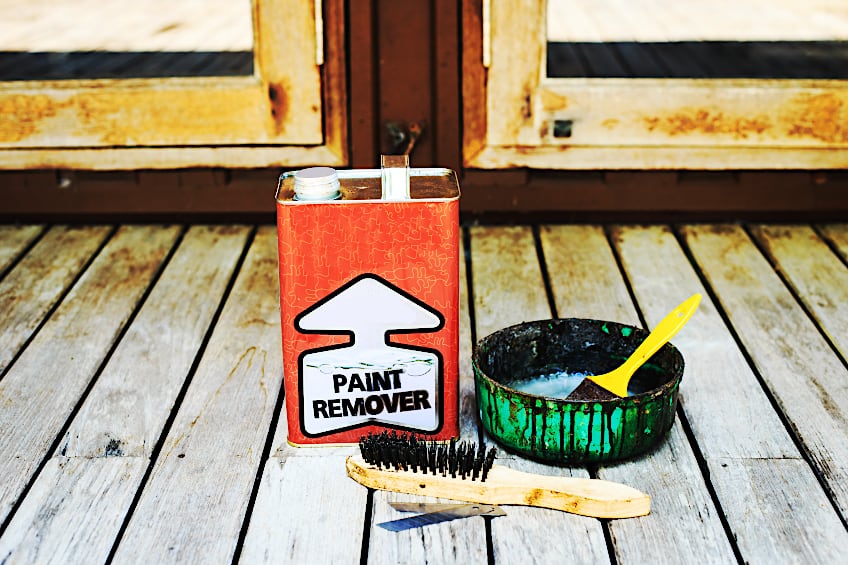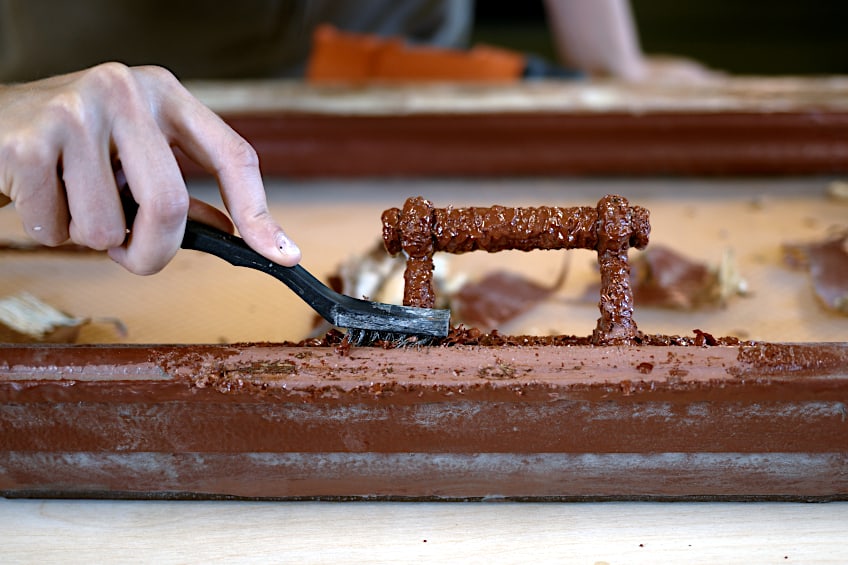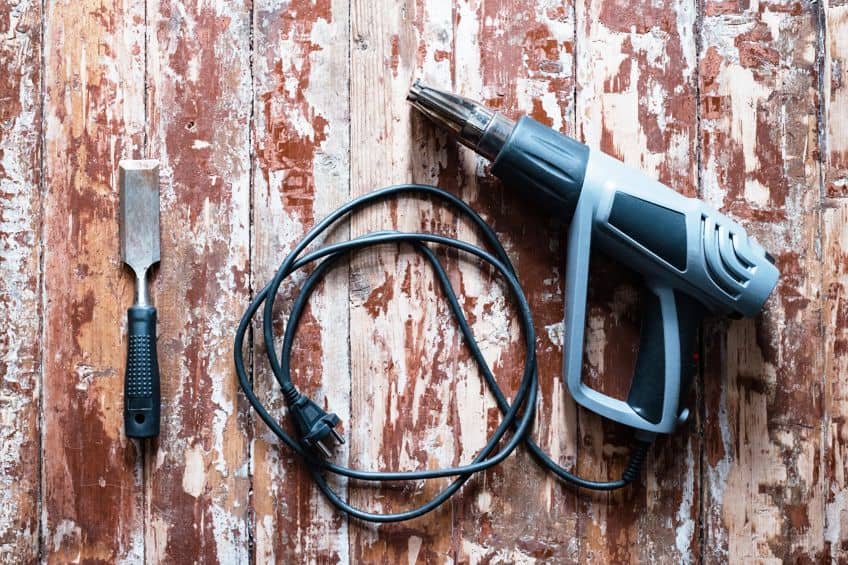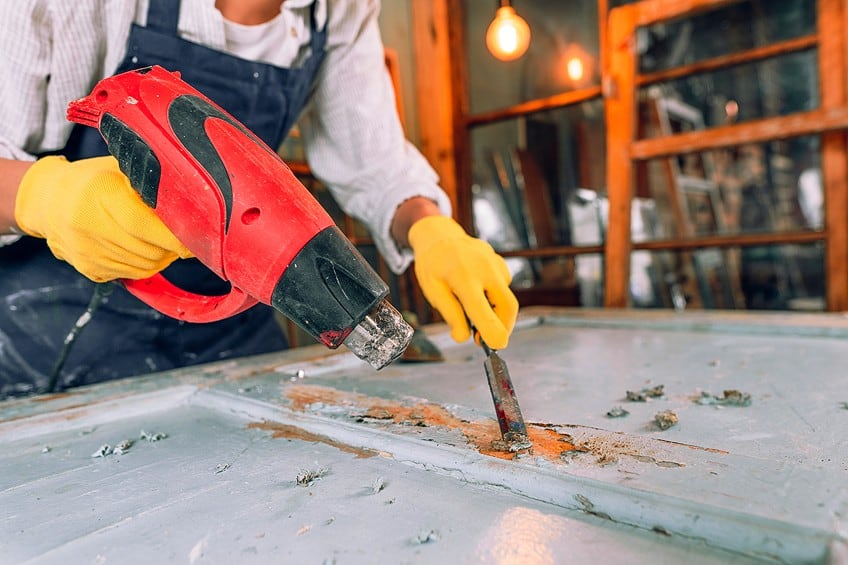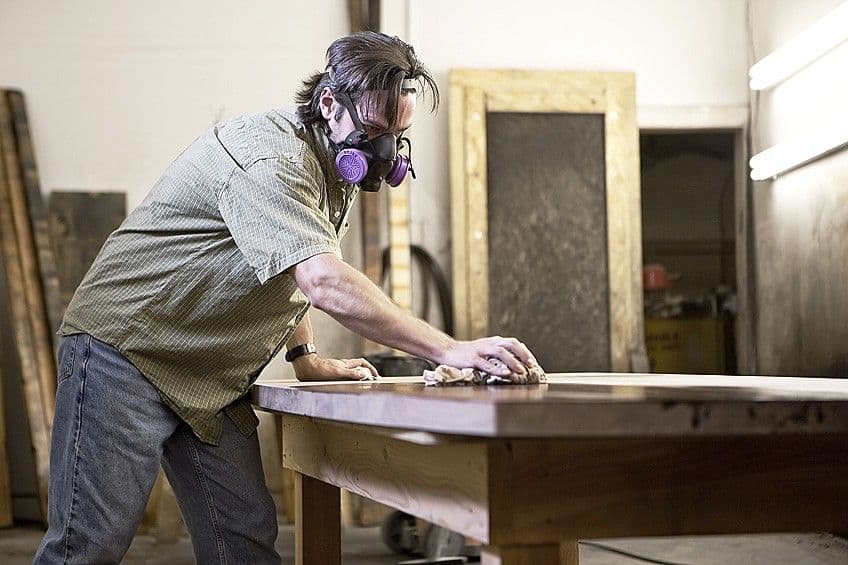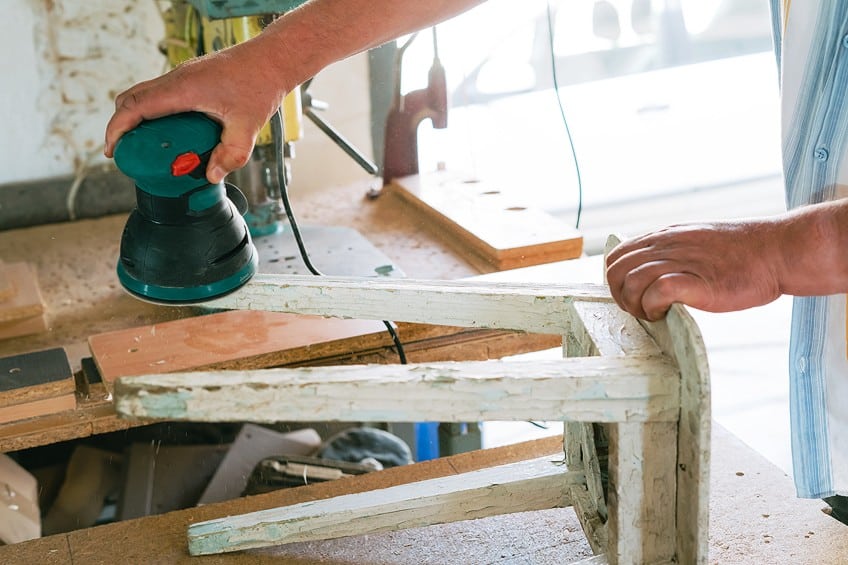How to Remove Spray Paint from Wood – Easy Stripping Guide
This post may contain affiliate links. We may earn a small commission from purchases made through them, at no additional cost to you. You help to support resin-expert.com
Understanding how to remove spray paint from wood can be incredibly useful, especially if you have been on the receiving end of vandalism to your property. There could be a variety of other reasons for removing spray paint. Maybe you would like to refinish an old paint job or you would like to give it a better-quality finish. Regardless of the reason, we have provided a range of methods that will make it easier for you to strip spray paint from a wooden surface.
Table of Contents
How to Strip Spray Paint from Wood
Removing spray paint from wood can be a tedious task if you are unfamiliar with the range of techniques and products that are available. These days you can find a tool for pretty much any job and a product that will help you to use that tool. Removing paint is usually something that takes a while as you want to get the paint off the surface as cleanly as possible.
This can be done in a variety of methods that range from using soap and water to industrial-strength paint strippers. However, it is very important to have a clear understanding of how to use these techniques and the products that are needed.
For your safety, knowing the advantages and disadvantages of each technique could save you time and money.
| Method | Advantages | Disadvantages |
| Soap & Water |
|
|
| Heat Gun |
|
|
| Chemical Paint Stripper |
|
|
| Acetone |
|
|
| Rubbing Alcohol |
|
|
| Sandpaper |
|
|
| Lacquer Thinner |
|
|
| Mineral Spirits |
|
|
The Best Methods for Spray Paint Removal
There are a variety of different methods that can be used to remove spray paint from wood. However, not all methods are equal and some of them can damage underlying layers of paint, which is not what you want. Below we have featured our top choices of spray paint removal techniques along with some information on them.
Method 1: Sanding
Sandpaper is among the most effective methods for removing thin layers from nearly any surface and this applies to removing spray paint from wood as well. In case you are unfamiliar with sandpaper, it is available in different grits, this is the level of roughness of each type, so, the lower the sandpaper grit count, the coarser the texture will be.
One of the best reasons for choosing sandpaper is that you will have complete control of the amount of pressure applied to the surface.
This means that the chances of going through the top layer of the spray paint into the lower layers are very low, especially if you are mindful of what you are doing. Using sandpaper to remove spray paint from wood will require the following materials:
- Sandpaper (80-, 150-, and 220-grit)
- Sanding tool (optional)
- Hand sander (optional)
Step 1
Comfortably place the sandpaper in your hand and begin sanding with the grain. Going with the grain ensures that you are not raising the wood fibers as this will result in a coarse finish, which will require more time to fix.
Step 2
Adjust the level of pressure whenever necessary, particularly where the paint is thicker. Applying too much pressure on thinner areas will result in you sanding through the surface of the wood. This could be catastrophic if you are not paying attention, as it could become a wood repair project on its own.
Step 3
Go over the completed surface with 150-grit sandpaper to get rid of scratches, then for a smooth finish, use 220-grit sandpaper. To ensure that you get the best results when using sandpaper to remove paint from wood, always ensure that you keep your workspace clean and dust-free. Additionally, you will need to be mindful of the amount of pressure that you are using to remove the paint as it is very easy to sand through the surface and damage the paintwork below.
A good way to prevent over-sanding from happening is to use slow and uniform strokes rather than sanding up and down as quickly as you can.
By using this method and regularly dusting the surface to check how much paint has been removed, you will get good results. Sanding any surface is quite tedious, fortunately, there are a range of other methods that can be used.
Method 2: Chemical Removers
Learning how to remove spray paint from wood with different chemical removers is a useful skill to have. The process can be quick and it is not as labor-intensive as sanding, at the end of the day it is merely applying a product, waiting for it to activate, and scraping it off. However, there are different types of chemical paint removers, some of them are available in the form of a gel and others are spray-on paint remover for wood or other types of materials.
Essentially, there are two primary forms of paint removers – solvent and caustic-based. Solvent-based products destroy the chemical adhesive that lies between the paint as well as the surface. This generally makes the paint look like it is swelling and this will make the paint very easy to remove.
Caustic-based products work a bit differently, this is because the ingredients that are featured are designed to break down the chemicals that are located in the paint, instead of the bond between the surface and the paint itself. These paint strippers are usually made with sodium hydroxide, which is an incredibly dangerous substance as it can burn the skin. To use a chemical paint remover, ensure that you have the products and follow the steps that we have listed below.
- Sandpaper
- Wire brush
- Paintbrush
- Solvent-based paint stripper
- Safety glasses
- Cloths
- Paint scraper
- Bucket
- Work gloves
Step 1
Decide if the wood itself is worth stripping as old and rotten wood is better off being replaced. Then, identify the type of paint that has been used and avoid lead paint. This type of paint can result in a range of health problems such as respiratory issues, developmental issues in young children, and seizures.
Step 2
Remove screws or nails that are protruding as this can lead to injuries and can make it harder to remove the peeling paint. Proceed to lay down some newspaper and apply the paint stripper. Apply it liberally and do it in sections rather than attempting to coat the whole surface in one go.
Step 3
Remove the softened paint with a paint scraper. Check if there are any missed areas and reapply the paint stripper. Give the wood a final wash and sanding. This will guarantee that the surface of the wood is void of any dirt or leftover chemicals.
Step 4
The type of product you will use depends on the type of paint that has been sprayed onto the wood. Each one has its advantages and disadvantages, these need to be considered before choosing one. Solvent-based paint stripper is a lot messier to use and generally struggles to remove thick layers of paint. However, these products will provide a clean and clear finish to the surface with zero damage made to the staining.
Caustic-based products are great for the removal of thick coats of paint and they are also great for detailed surfaces as they are thicker. Keep in mind that these products can damage or stain the surface of the wood, which is something that solvent-based products do not do.
Method 3: Heat Gun
Using a heat gun as a spray-on paint remover for wood is a natural method that is fairly safe if done correctly. Heat guns essentially melt the paint, but it is important to get it to a removable state rather than a liquid. Most experts would not recommend this process to beginners, this is because of magnified vapors as well as accidental combustion which is both harmful and incredibly unpleasant.
Keep in mind that a heat gun and a conventional hairdryer are two very different things, with the former reaching temperatures up to 1,200℉, which means that it is not a good idea to point it at yourself.
To learn how to remove spray paint from wood while using a heat gun, follow the steps that we have provided below. You will also need the materials and tools that we have listed.
- Respirator
- Heat gun
- Paint scraper
- Vacuum
- Sandpaper
Step 1
With the heat gun on a low setting, gradually move it over the exterior of the spray paint. Once the paint begins to bubble, you can move onto the next step. If it does not bubble, but it appears to be loose, you can continue scraping off the paint.
Step 2
Scrape the paint with your paint scraper and the paint should slide off, if not, revert to step 1 or apply more force. Keep repeating the first and second steps to extract the paint from the surface.
Step 3
Now you can start sanding the surface until smooth. You can begin with low-grit sandpaper (40 to 60) and work your way up to 240-grit. This is by no means a quick job as the paint has a tendency to cool the moment you remove the heat. We found that it is best to start scraping the second you remove the heat from the paint. If it is within your budget and you are worried about paint vaporization then an infrared heat gun could be a good investment, particularly if you have a lot of paint that needs to be removed.
When using a heat gun, play around with different settings; however, do not burn the wood as this will be catastrophic. You should also never place the heat gun near flammable objects as the heat is enough to start a fire. Always exercise extreme caution and always assume that the tip of the gun is hot at all times.
Tips for Success
When learning how to strip spray paint from wood the technique you use is as important as the safety measures that you take. You should also factor in the different types of wood that you are working with and the condition that it is in. This could determine the type of products that can be used along with the techniques that can be used.
Exercise Proper Safety
Depending on your method for removing spray paint from wood, you will need to keep in mind that spray paint is generally added in thin layers. This means that you could have a lot of dust particles lift from the surface. Wearing a high-quality respirator will pay off as inhaling those particles will make you very sick, if not worse.
It is always recommended that you wear a mask, goggles, and gloves to ensure that none of the fumes or particles get into your eyes or mouth.
We would also recommend washing your clothing after you have finished the project, as you would not want to spread any residue around your home. Additionally, always work in a well-ventilated area or outside, this will minimize the chances of inhalation of any toxic fumes or paint particles.
Be Patient With Wood
You might be tempted to work as quickly as possible when removing the spray paint; however, you can easily damage softwoods such as pine, cedar, and spruce. Take your time if you are unsure of what you are working with, as this will save you more time as you will not need to do any repairs or extra sanding when you have removed all of the paint.
Know What Kind of Spray Paint You Are Removing
Before you begin the process of removing spray paint from a wood surface, you will need to know what type of paint you are removing. By understanding what type of paint you are working with, you can choose the appropriate method of removal. There are several different types that include the following variants:
- Rust-preventative
- Oil-based
- Acrylic
- Enamel
- Frosted
- Chalkboard
- High-heat
- Epoxy
- Lacquer
- General purpose
While some of these will not be found on wood, paints such as lacquer, general purpose, epoxy, enamel, and oil-based. Each of the different paint removal techniques that have been mentioned will react differently to each type of paint. However, this does not mean that they are not interchangeable.
Removing spray paint from wood can be a simple, yet time-consuming process. However, if you follow the steps that we have mentioned, you should have no trouble removing any type of spray paint from any type of wooden surface. This will save you a bit of money, as you will not need to replace the wood that has been covered in paint. Nevertheless, we hope that you have a safe experience when removing spray paint from wood.
Frequently Asked Questions
What Is the Easiest Method of Removing Spray Paint from Wood?
This depends on how comfortable you are with certain techniques; however, we have found that using chemical paint strippers are the least labor-intensive.
Is Using a Heat Gun Safe for Paint Removal?
Yes, but with any paint removal method, you will need to be very careful. Heat guns can cause paint to vaporize, releasing dangerous chemicals and fumes.
How Long Will It Take to Remove Spray Paint With Sandpaper?
This depends on how many layers of spray paint have been applied and what kind of sandpaper you are using. It is a labor-intensive technique of removing paint; however, it is best when working with softwoods.


